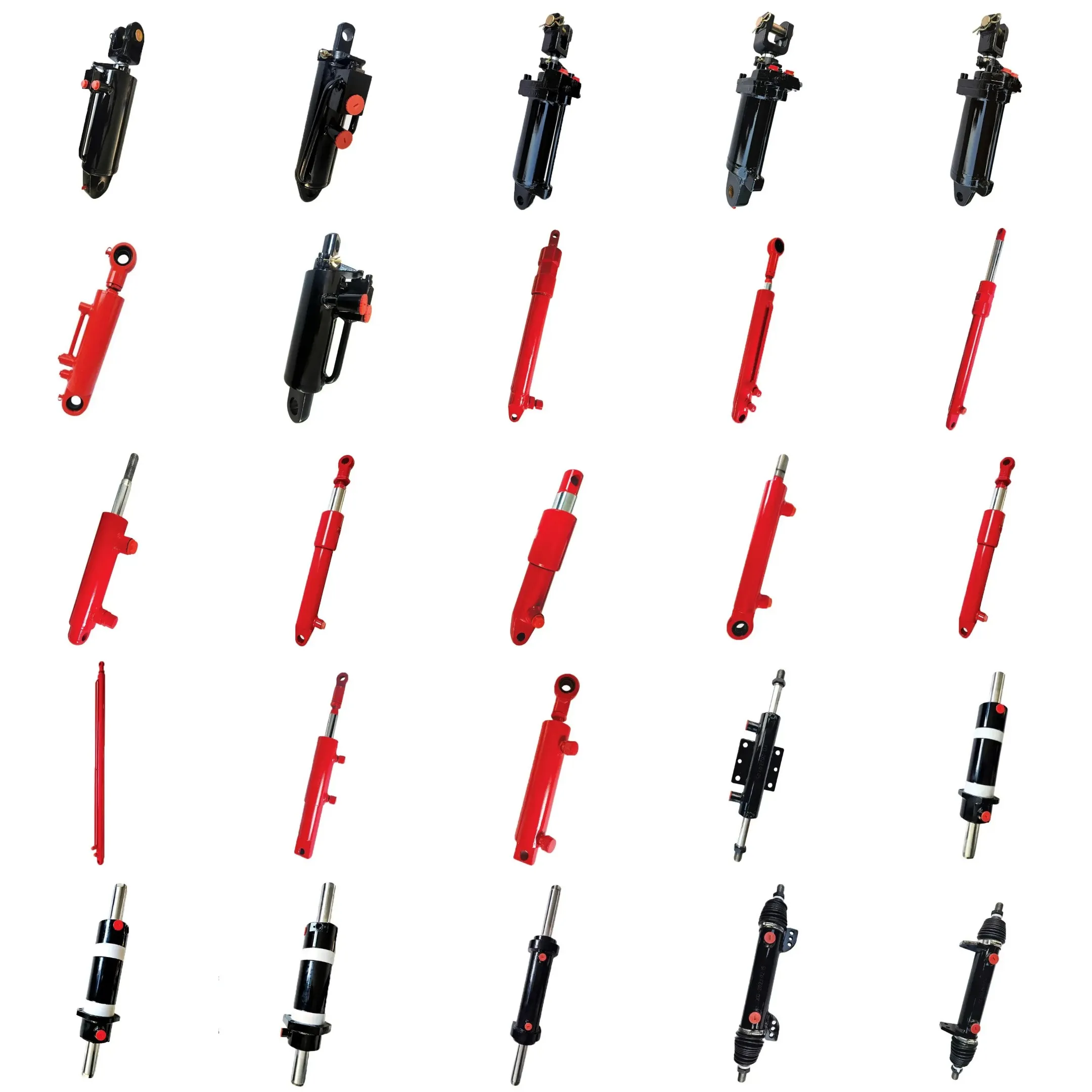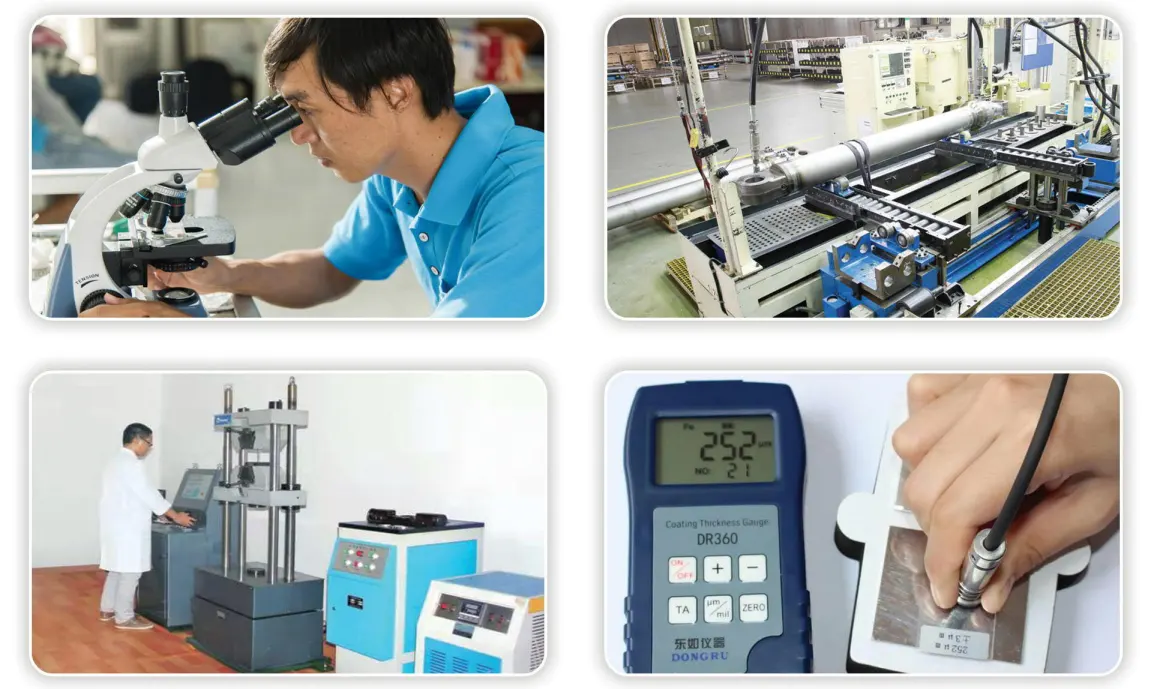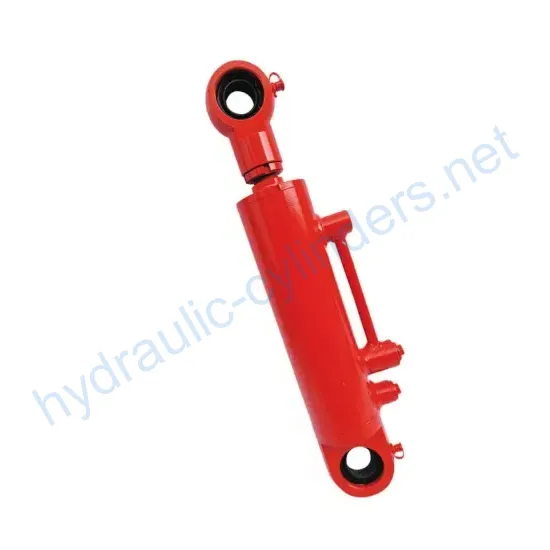Sanitation Vehicle Top Cover Hydraulic Cylinder
As one of the hydraulic cylinders manufacturers, suppliers, and exporters of mechanical products, We offer hydraulic cylinders and many other products.
Please get in touch with us for details.
Mail:sales@hydraulic-cylinders.net
Manufacturer supplier exporter of hydraulic cylinders.
Sanitation Vehicle Top Cover Hydraulic Cylinder
Product Overview
The Sanitation Vehicle Top Cover Hydraulic Cylinder is an essential component designed for the efficient operation of sanitation vehicles. This hydraulic cylinder is responsible for the lifting and lowering of the top cover, ensuring that waste management processes are carried out seamlessly. Made with high-quality materials, it provides a reliable solution for various applications within the sanitation industry. The hydraulic cylinder operates by converting fluid power into mechanical energy, allowing for smooth movement and control. Its robust construction ensures durability, making it suitable for heavy-duty tasks. With a diameter of 63mm and a rod diameter of 35mm, it has a travel distance of 140mm and an installation distance of 405mm, making it versatile for different sanitation vehicle designs.
Product Specifications
Specifications Overview
- Cylinder Diameter: 63mm
- Rod Diameter: 35mm
- Travel: 140mm
- Installation Distance: 405mm
These specifications highlight the hydraulic cylinder’s capability to handle substantial loads while maintaining efficiency. The specific dimensions ensure compatibility with various sanitation vehicle models, providing a precise fit for optimal performance.
Key Features
- High load capacity for heavy sanitation tasks.
- Efficient sealing system to prevent leakage.
- Durable construction for long-lasting performance.
- Responsive operation aiding in quick cover movement.
- Customizable options available for specific needs.
Our manufacturing capabilities allow us to produce this hydraulic cylinder, ensuring it can perfectly replace existing units with improved performance and reliability.
Application Scenarios
Waste Management Vehicles
This hydraulic cylinder is primarily used in waste management vehicles, facilitating the lifting and lowering of the top cover. The efficient operation of the cylinder is crucial in ensuring that waste can be securely contained during transport, minimizing spillage and odor. These vehicles rely on the hydraulic cylinder for quick access to the waste compartment, making it easier for operators to manage waste efficiently. The reliable function of the cylinder contributes to the overall efficiency of waste collection processes.
Recycling Trucks
In recycling operations, the hydraulic cylinder plays a vital role in opening and closing the covers of recycling trucks. This ensures that different materials can be separated and managed appropriately during transport. The ability to operate smoothly under various conditions is essential for maintaining the integrity of recyclable materials. As environmental concerns grow, these applications are becoming increasingly important in promoting sustainable practices within urban settings.
Compactor Trucks
Compactor trucks also benefit from the functionality of the hydraulic cylinder. The mechanism is critical for compressing waste efficiently, enabling optimal use of space within the truck. The cylinder’s design allows for robust performance, even when dealing with heavy loads, ensuring that the compaction process is effective. This efficiency not only improves waste collection operations but also enhances fuel economy by maximizing load capacity.
Design Considerations
Load Capacity
When designing hydraulic cylinders, load capacity is a primary consideration. The cylinder must withstand significant forces without compromising its structural integrity. A well-designed cylinder provides reliability, ensuring that it can perform under heavy operational stresses commonly encountered in sanitation vehicles.
Sealing Efficiency
Effective sealing is crucial to prevent hydraulic fluid leakage. High-quality sealing materials like polyurethane and nitrile rubber are used to enhance the performance and lifespan of the cylinder. These seals are designed to withstand the high pressures and varied temperatures typical in hydraulic systems, ensuring operational efficiency.
Durability
The durability of the hydraulic cylinder is paramount, especially in rigorous applications. The use of high-grade materials and precision engineering techniques enhances the longevity of the product. Durability ensures that the cylinder can perform consistently over time, reducing the frequency of replacements and maintenance.
Safety Features
Incorporating safety features in hydraulic cylinder design is essential to protect operators and equipment. Features such as pressure relief valves and overload protection mechanisms are vital in preventing accidents and ensuring safe operation. This consideration is particularly important in environments where high loads and hydraulic pressures are common.
Maintenance and Serviceability
Designing hydraulic cylinders for easy maintenance is crucial for minimizing downtime. Features such as easily accessible seals and lubrication points allow for straightforward servicing. This design strategy ensures that regular maintenance can be performed without specialized tools or excessive disassembly.
Sealing and Lubrication
The sealing and lubrication of hydraulic cylinders are critical to their performance and longevity. Various seals are used, including piston seals and rod seals, which are essential for maintaining system pressure. The selection of seal materials such as polyurethane and nitrile rubber enhances wear resistance and durability, ensuring that the seals can withstand harsh operating conditions.
The cylinder body and threaded end surfaces undergo meticulous treatment to improve wear resistance. This treatment is vital, as it reduces the frequency of seal replacements and enhances overall performance. Regular lubrication with appropriate hydraulic oil is essential to minimize friction and wear, ensuring smooth operation and extending the life of the cylinder.
Preventive Maintenance Measures
- Conduct regular inspections for leaks and wear.
- Ensure proper lubrication of moving parts.
- Regularly check seals for signs of damage or wear.
Implementing these preventive measures helps maintain optimal performance and extends the lifespan of the hydraulic cylinder. Regular inspections can identify potential issues before they escalate, saving time and costs associated with major repairs.
Installation Guidelines
Proper installation of the hydraulic cylinder is critical for its performance. Begin by ensuring that all components are clean and free of debris. Align the cylinder accurately with the installation brackets, using appropriate fixtures to secure it in place. It is crucial to check that all hydraulic connections are tight and free of leaks.
During installation, refer to the manufacturer’s specifications for torque settings and other parameters. After installation, conduct a thorough check to ensure that the cylinder operates smoothly throughout its range of motion. Regularly inspect all mounting points and connections, as vibrations and other factors can lead to loosening over time.
Maintenance Tasks
Regular Inspections
Conducting regular inspections is vital for identifying potential problems early. Look for signs of wear, corrosion, and fluid leaks, which can indicate a need for repairs or replacements. Inspections should be performed at scheduled intervals, especially after significant operational periods.
Proper Lubrication
Lubrication is pivotal in preventing wear and tear on moving parts. Ensure that the hydraulic oil used is compatible with the cylinder and refill it as needed to maintain proper levels. A well-lubricated cylinder operates more efficiently and has a longer lifespan.
Seal Replacement and Calibration
Replacing worn seals is crucial for maintaining the cylinder’s performance. Regularly check seals for signs of wear and replace them as necessary to prevent hydraulic fluid leakage. Calibration checks should also be performed to ensure that the cylinder operates within specified parameters, maintaining optimal performance.
Safety Considerations and Environmental Factors
When using hydraulic cylinders, safety measures must be strictly adhered to. Operators should be trained in the correct handling procedures to mitigate risks. This includes understanding the potential hazards associated with hydraulic fluid under pressure and the importance of proper personal protective equipment (PPE). Ensuring that all safety mechanisms are functioning correctly is essential for safe operation.
Fault Diagnosis and Common Issues
- Identifying Performance Issues
- Leak Detection Techniques
- Common Seal Failures
Diagnosing faults in hydraulic cylinders requires a methodical approach. Start by observing any performance issues, such as reduced lifting capacity or erratic movements. If leaks are detected, assess the seals and connections for wear or damage. Common seal failures can often be attributed to improper installation or the use of incompatible materials, necessitating careful selection and regular maintenance.
Troubleshooting Tips
To effectively troubleshoot hydraulic cylinder issues, maintain a log of all maintenance tasks and any changes in performance. This information can help identify patterns that indicate underlying problems. Regular training for operators on recognizing early signs of failure can lead to timely interventions and prevent further issues.

About Our Company
As a leading manufacturer of hydraulic cylinders, our company excels in providing a comprehensive range of products tailored to meet the needs of both domestic and international markets. Our expertise in hydraulic systems ensures that we deliver high-quality solutions that adhere to industry standards.
We pride ourselves on our professional approach, with international certifications that validate our quality assurance processes. Our custom services cater to specific client requirements, ensuring that every product is designed to meet unique operational needs.
Equipped with advanced production facilities, we leverage state-of-the-art technology to manufacture hydraulic cylinders that stand the test of time. Our dedicated after-sales service team is always available to assist clients in troubleshooting and optimizing their hydraulic systems.

Author: lyl
Take a Tour of Our VR Factory:
Take a tour of our VR factory with the following
Hydraulic Cylinder Application:


